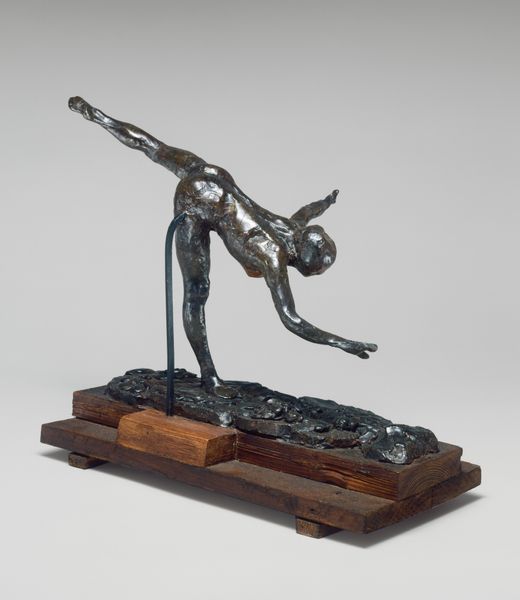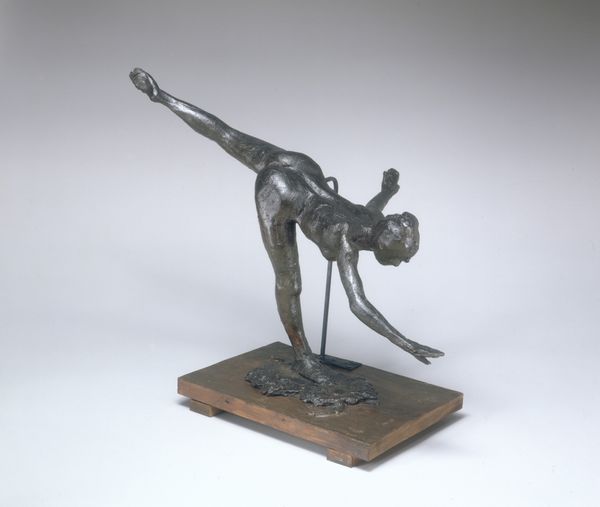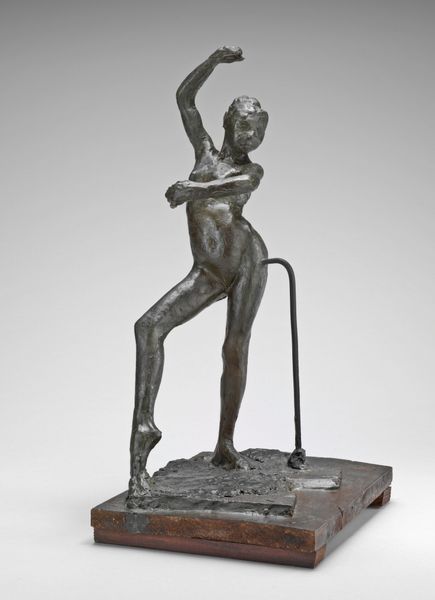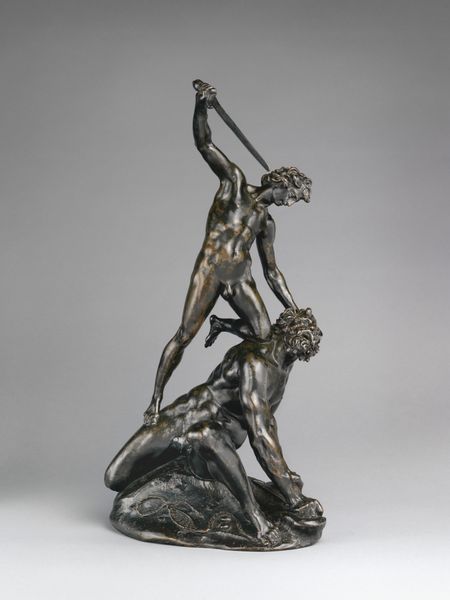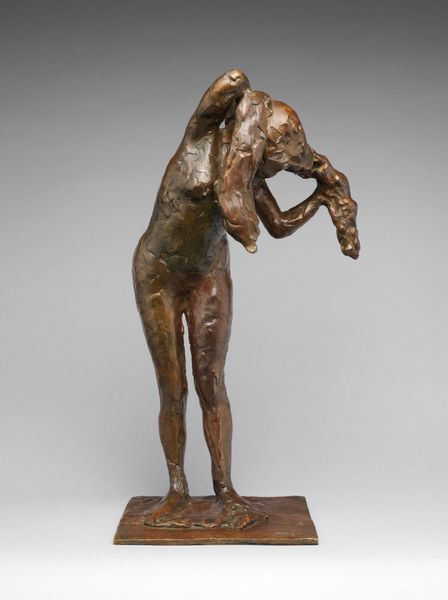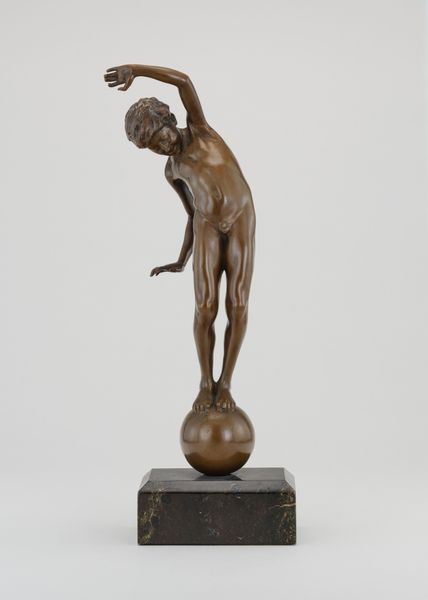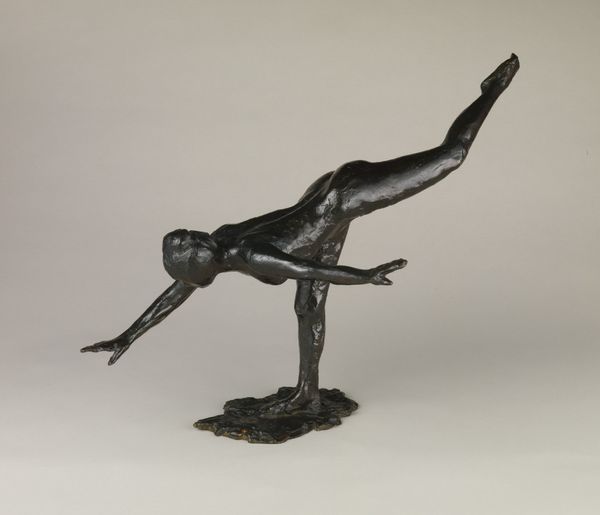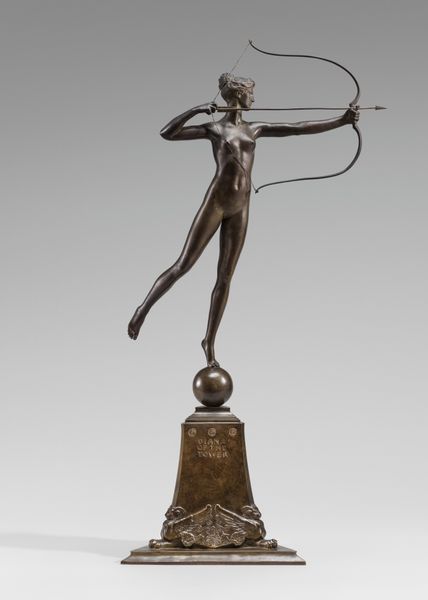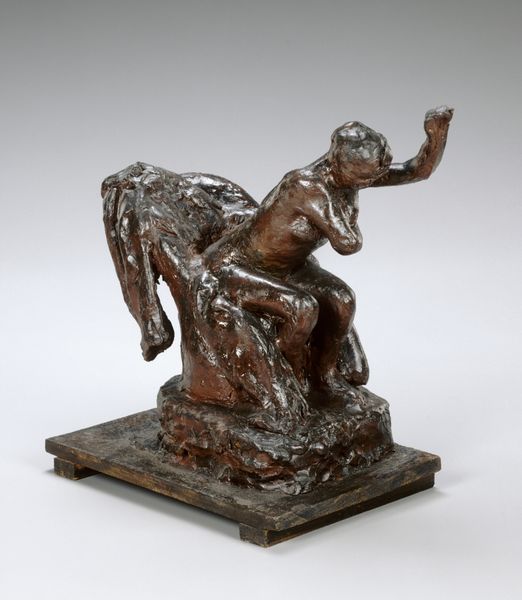
bronze, sculpture
#
art-deco
#
sculpture
#
landscape
#
bronze
#
figuration
#
sculpture
Dimensions: overall: 55.88 × 58.42 × 20.96 cm (22 × 23 × 8 1/4 in.)
Copyright: National Gallery of Art: CC0 1.0
Curator: Let’s discuss Paul Manship’s 1922 bronze sculpture, "Indian Running with Dog." Editor: It exudes such energy, doesn't it? The lines are so dynamic. There’s this sense of forward thrust that grabs you. The figures feel as if they're captured mid-motion, a hunt perhaps. Curator: Manship was deeply engaged with materials. He was masterful in bronze casting, exploring classical forms in a decidedly Art Deco style. I find the rich patination of the bronze fascinating—how the treatment of its surface contributes to the illusion of movement. What labor went into creating such an illusion of fluid speed with hard metal? Editor: The "Indian," as he is called in the title, is an incredibly loaded word. It presents so many problematic and homogenizing presumptions. While admiring its formal elements, we must simultaneously acknowledge that this romanticized depiction comes at the expense of lived indigenous experiences and socio-political representation. The active gesture is in tension with an idealization of the subject and a reduction of complexity and historical memory. Curator: Indeed, the bronze-casting technique, for instance, enabled reproduction at varying scales, commodifying this image. We have to consider its life as a marketable object. Where was it sold? Who purchased it? What was the mode of display and the cycle of exchange in 1920s America? How might that consumption play into a narrative of control or violence against an oppressed group of peoples? Editor: The sculpture prompts me to examine cultural appropriation in early 20th-century American art. Where can we find voices offering a decolonial narrative that exposes the objectification in the representation, not to silence it but to challenge that romantic vision of Indigenous people that often overshadowed the realities they faced? The tension in this piece forces a necessary dialogue about power, representation, and historical memory. Curator: So, while we appreciate Manship's artistic skill, analyzing his process and choice of materials, we can't ignore the historical context and ethical implications it evokes. Editor: It urges a layered understanding where artistic appreciation converges with a reckoning of historical consciousness, pushing towards greater inclusivity and equity.
Comments
No comments
Be the first to comment and join the conversation on the ultimate creative platform.
